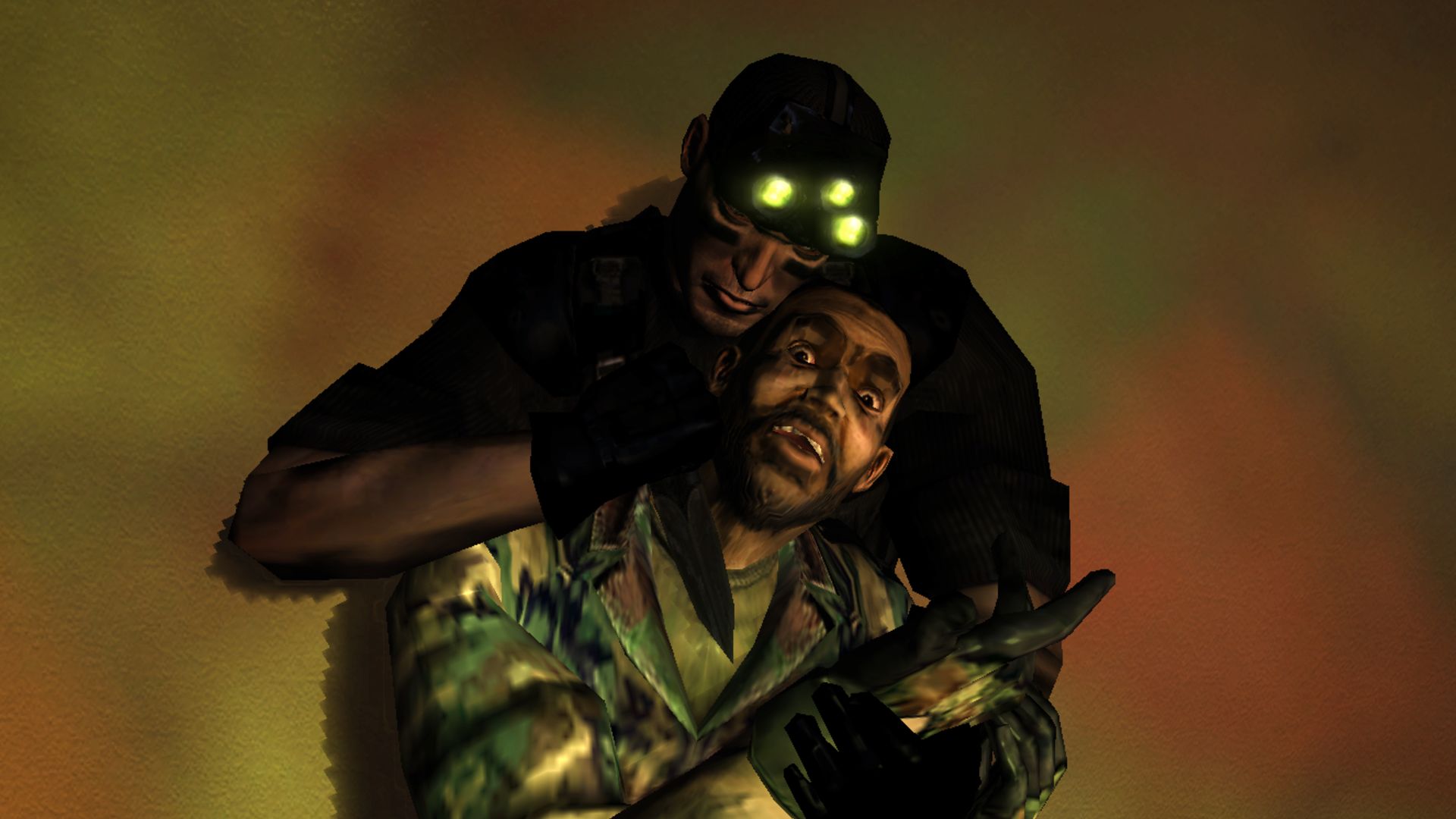The Splinter Cell remake’s stealth needs to be simple

In Chaos Theory, the third and arguably the best Splinter Cell game, there's a moment that's always stuck with me. I'm upside-down, shimmying along a pipe on the ceiling to cross over a fire that's burning below, like a very trim spit-roast hog dressed in jet black neoprene. When I'm about halfway along the pipe, a goon pokes his head through the doorway ahead of me; in a two-second storm of sheer instinct, I let go of the pipe with my hands, hanging completely upside-down by my legs, draw my silenced pistol, take a single shot - plip - and the man crumples into a pile before me.
What makes this Mission: Impossible moment memorable is its rarity in a game that's about 90% pure stealth. Sam Fisher has an impressive array of acrobatic skills, like the aforementioned upside-down shot, a split-jump that lets him straddle narrow corridors, and the ability to grab enemies while hanging from the ceiling like a Half-Life barnacle, but they feel special because he so rarely gets to actually use them. Fisher is constantly showing off his gymnast skillset in later Splinter Cell outings.
Chaos Theory came right at the end of a golden era of stealth games; one that more or less began with Thief: The Dark Project in 1998 and probably ended around 2006 with Hitman: Blood Money. Released in 2005, Chaos Theory was the last Splinter Cell game left untouched by the emerging trend towards action and explosions. Its combat is deliberately awkward; you have very little health, you can't run and gun, and you have to press a button to aim before firing.

Post a Comment